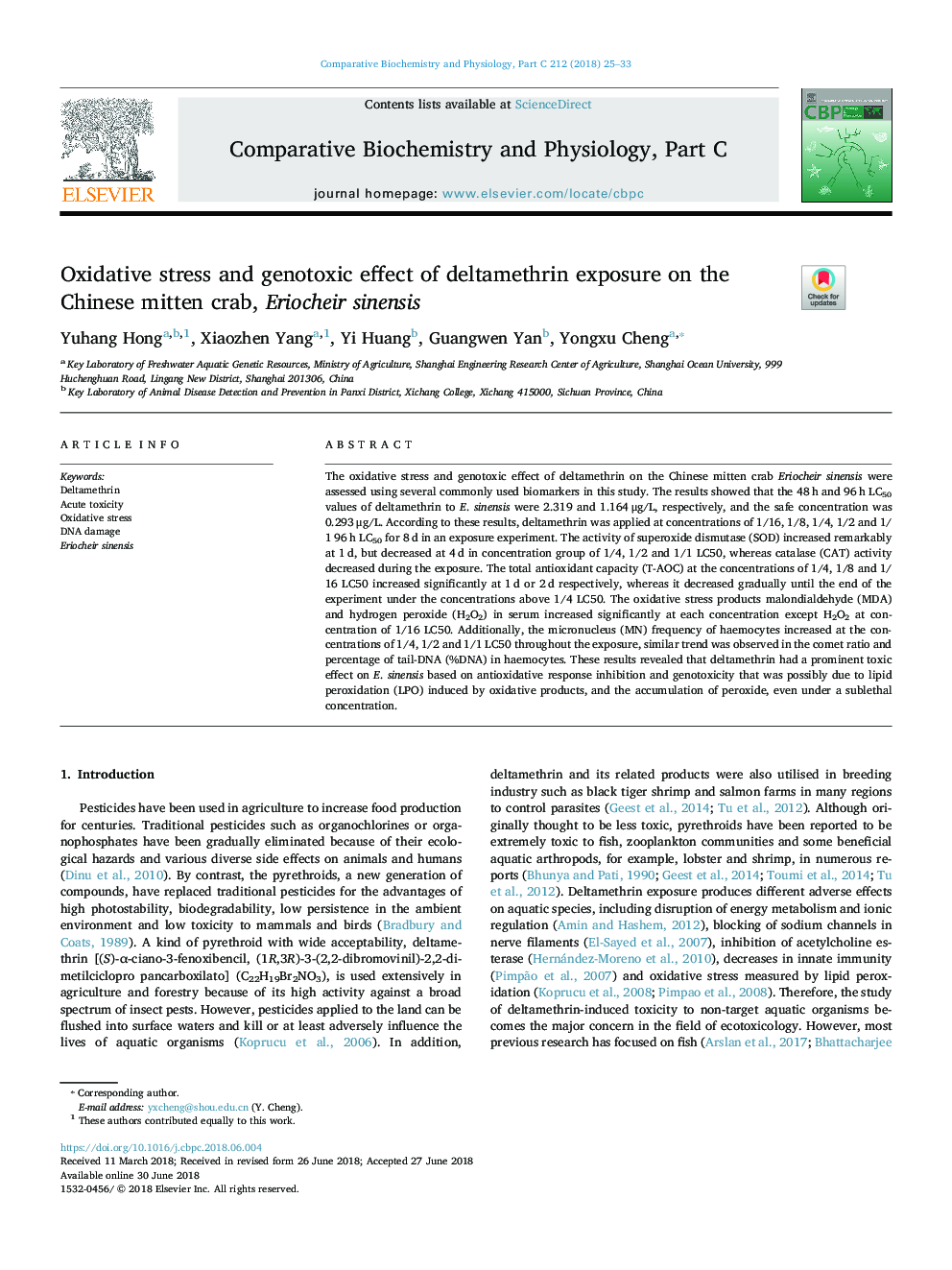| Article ID | Journal | Published Year | Pages | File Type |
|---|---|---|---|---|
| 8318960 | Comparative Biochemistry and Physiology Part C: Toxicology & Pharmacology | 2018 | 9 Pages |
Abstract
The oxidative stress and genotoxic effect of deltamethrin on the Chinese mitten crab Eriocheir sinensis were assessed using several commonly used biomarkers in this study. The results showed that the 48â¯h and 96â¯h LC50 values of deltamethrin to E. sinensis were 2.319 and 1.164â¯Î¼g/L, respectively, and the safe concentration was 0.293â¯Î¼g/L. According to these results, deltamethrin was applied at concentrations of 1/16, 1/8, 1/4, 1/2 and 1/1 96â¯h LC50 for 8â¯d in an exposure experiment. The activity of superoxide dismutase (SOD) increased remarkably at 1â¯d, but decreased at 4â¯d in concentration group of 1/4, 1/2 and 1/1 LC50, whereas catalase (CAT) activity decreased during the exposure. The total antioxidant capacity (T-AOC) at the concentrations of 1/4, 1/8 and 1/16 LC50 increased significantly at 1â¯d or 2â¯d respectively, whereas it decreased gradually until the end of the experiment under the concentrations above 1/4 LC50. The oxidative stress products malondialdehyde (MDA) and hydrogen peroxide (H2O2) in serum increased significantly at each concentration except H2O2 at concentration of 1/16 LC50. Additionally, the micronucleus (MN) frequency of haemocytes increased at the concentrations of 1/4, 1/2 and 1/1 LC50 throughout the exposure, similar trend was observed in the comet ratio and percentage of tail-DNA (%DNA) in haemocytes. These results revealed that deltamethrin had a prominent toxic effect on E. sinensis based on antioxidative response inhibition and genotoxicity that was possibly due to lipid peroxidation (LPO) induced by oxidative products, and the accumulation of peroxide, even under a sublethal concentration.
Related Topics
Life Sciences
Biochemistry, Genetics and Molecular Biology
Biochemistry
Authors
Yuhang Hong, Xiaozhen Yang, Yi Huang, Guangwen Yan, Yongxu Cheng,
